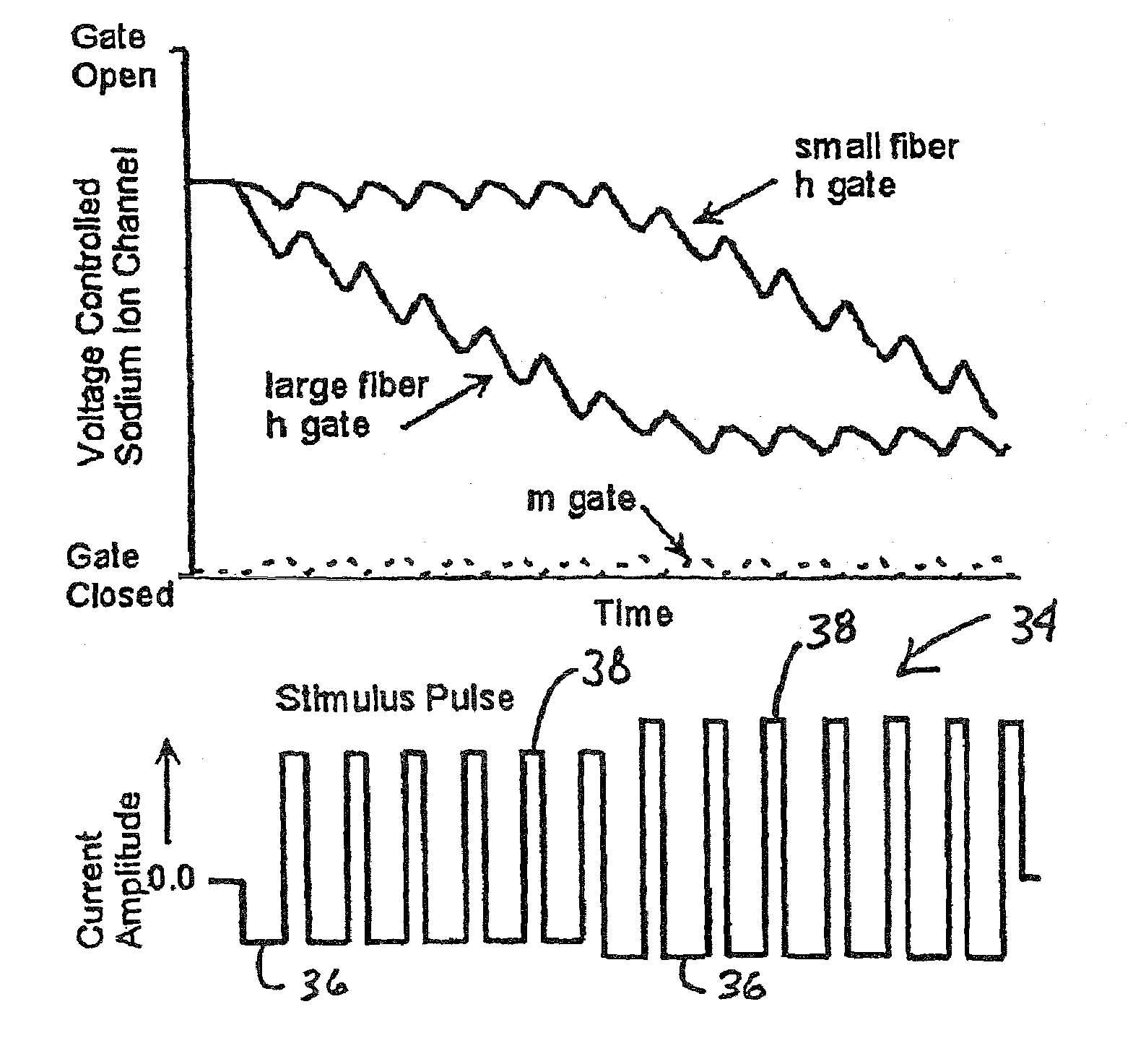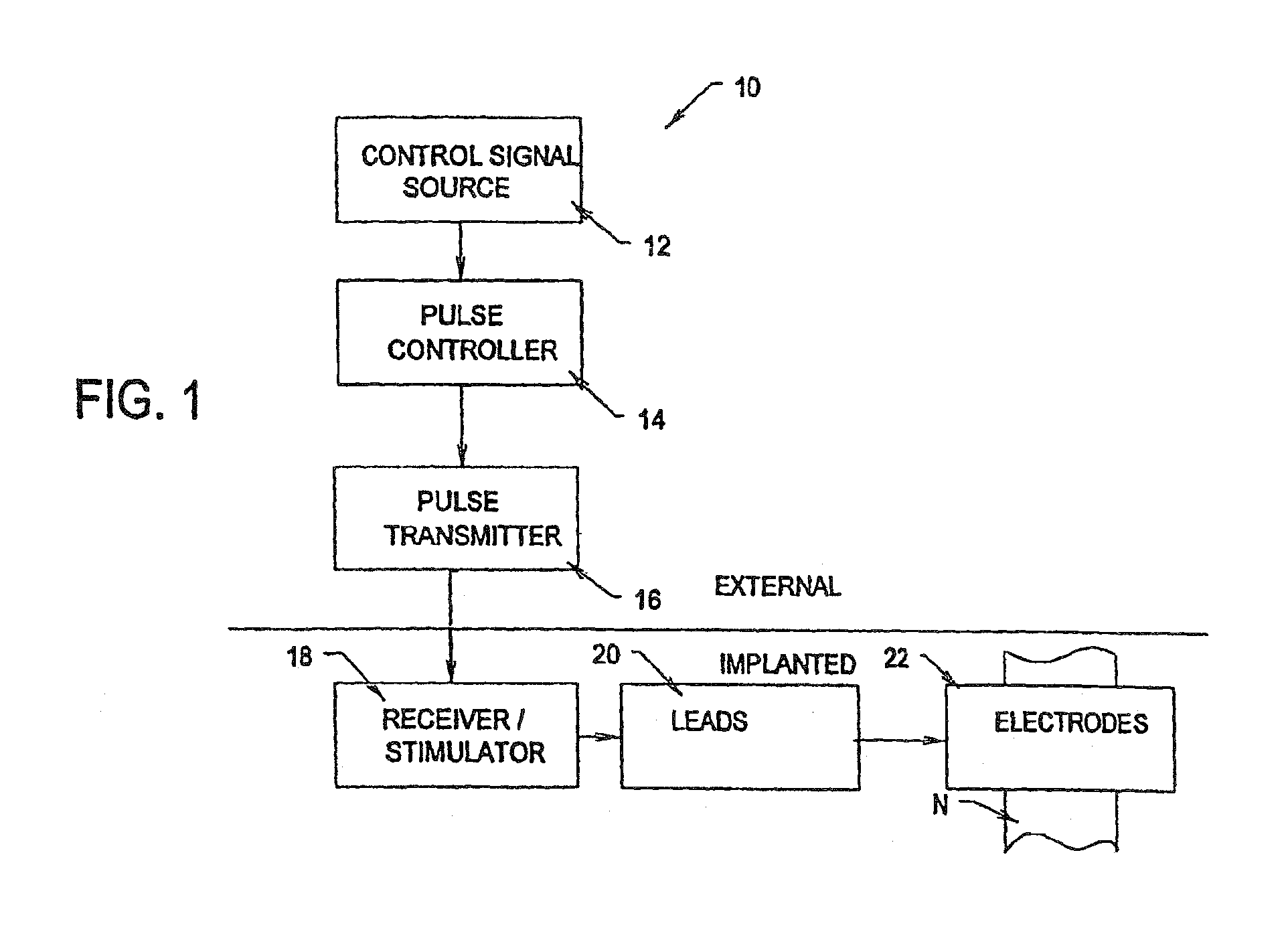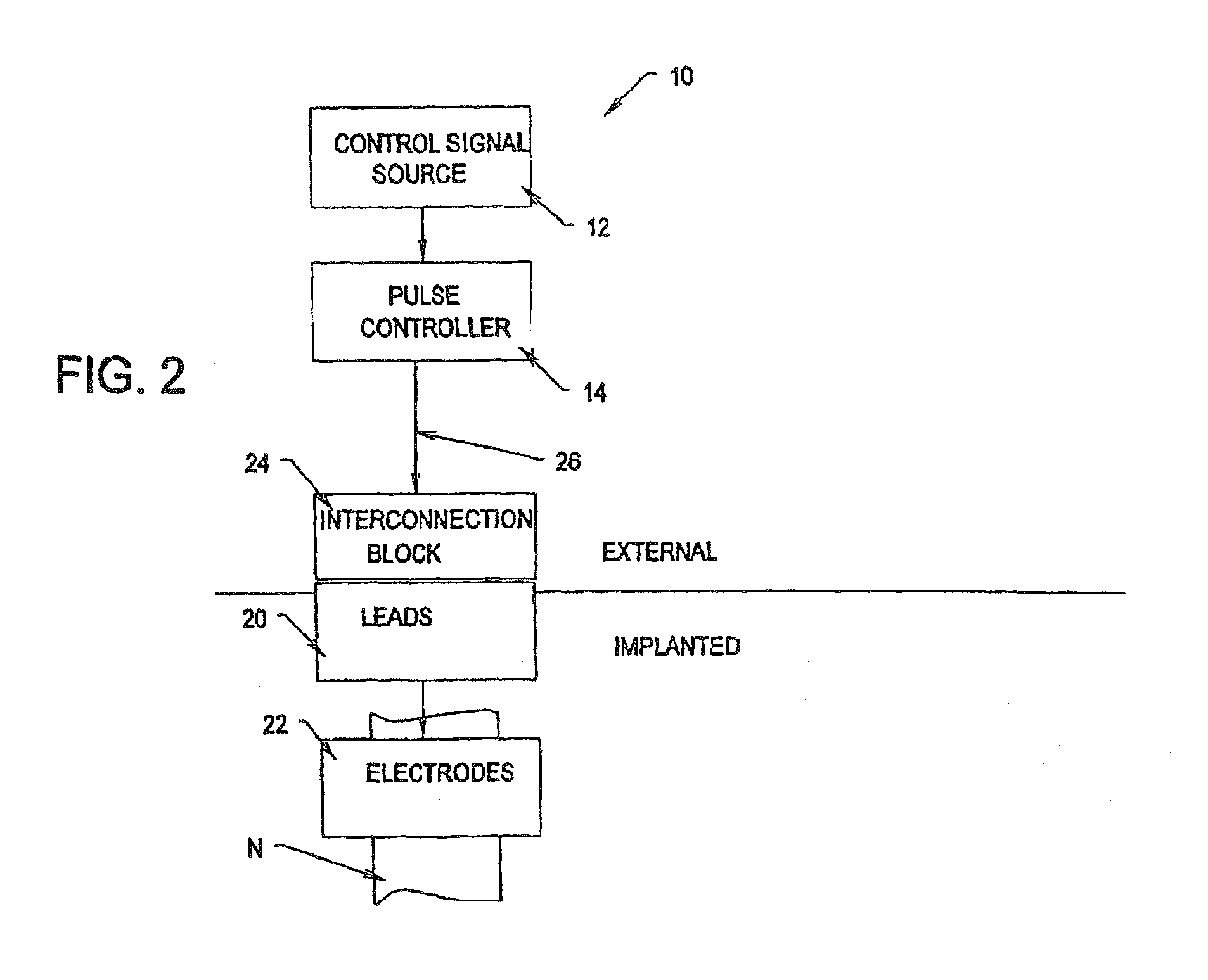Systems and methods for reversibly blocking nerve activity
- Summary
- Abstract
- Description
- Claims
- Application Information
AI Technical Summary
Benefits of technology
Problems solved by technology
Method used
Image
Examples
example 1
Neuroma Pain
[0041]A system 10 such as shown in FIG. 1 can be used to block neuroma pain association with an amputated arm of leg. In this arrangement, one or more electrodes 22 are secured on, in, or near the neuroma. The pulse controller 14 can comprise a handheld, battery powered stimulator having an on-board microprocessor. The microprocessor is programed by a clinician to generate a continuous waveform that embodies features of the invention, having the desired amplitude, duration, and shape to block nerve impulses, in the region of the neuroma. The pulse controller 14 can be coupled to the electrode, e.g., by percutaneous leads, with one channel dedicated to, each electrode used. A control signal source 12 could comprise an on-off button on the stimulator, to allow the individual to suspend or continue the continuous application of the waveform, to block the neuroma pain. No other special control functions would be required.
example 2
Muscle Spasms Due to Spinal Cord Injury, Cerebral Palsy, or Tourett's Syndrome
[0042]A system 10 like that shown in FIG. 1 can be used to block muscle spasms due to, e.g., a spinal cord injury, cerebral palsy, or tourett's syndrome. In this arrangement, one or more electrodes 22 are secured on, in, or near the nerve or nerves affecting the muscle spasms. As in Example 1, the pulse controller 14 can comprise a handheld, battery powered stimulator having an on-board microprocessor. The microprocessor is programed by a clinician to generate a continuous waveform that embodies features of the invention, having the desired amplitude, duration, and shape to block nerve impulses in the region of the muscle spasms. As in Example 1, the pulse controller 14 can be coupled to the electrode, e.g., by percutaneous leads, with one channel dedicated to each electrode used. A control signal source 12 could comprise an on-off button on the stimulator, to allow the individual to suspend or continue th...
example 3
Block Uncoordinated Finger Flexure Spasms Due to Multiple Sclerosis or Stroke
[0044]A system 10 like that shown in FIG. 1 can be used to block finger flexure spasms due to, e.g., a multiple sclerosis or stroke. In this arrangement, one or more epimysial and intramuscular electrodes 22 are appropriately implanted by a surgeon in the patient's arm. The implanted electrodes 22 are positioned by the surgeon by conventional surgical techniques to block conduction of impulses to finger flexure muscles. As in Example 1, the pulse controller 14 can comprise a handheld, battery powered stimulator having an on-board microprocessor. The microprocessor is programed by a clinician to generate a continuous waveform that embodies features of the invention, having the desired amplitude, duration, and shape to provide a low level block of nerve impulses to the finger flexure muscles. A control signal source 12 could comprise an on-off button on the stimulator, to allow the individual to select the co...
PUM
 Login to View More
Login to View More Abstract
Description
Claims
Application Information
 Login to View More
Login to View More - R&D Engineer
- R&D Manager
- IP Professional
- Industry Leading Data Capabilities
- Powerful AI technology
- Patent DNA Extraction
Browse by: Latest US Patents, China's latest patents, Technical Efficacy Thesaurus, Application Domain, Technology Topic, Popular Technical Reports.
© 2024 PatSnap. All rights reserved.Legal|Privacy policy|Modern Slavery Act Transparency Statement|Sitemap|About US| Contact US: help@patsnap.com










